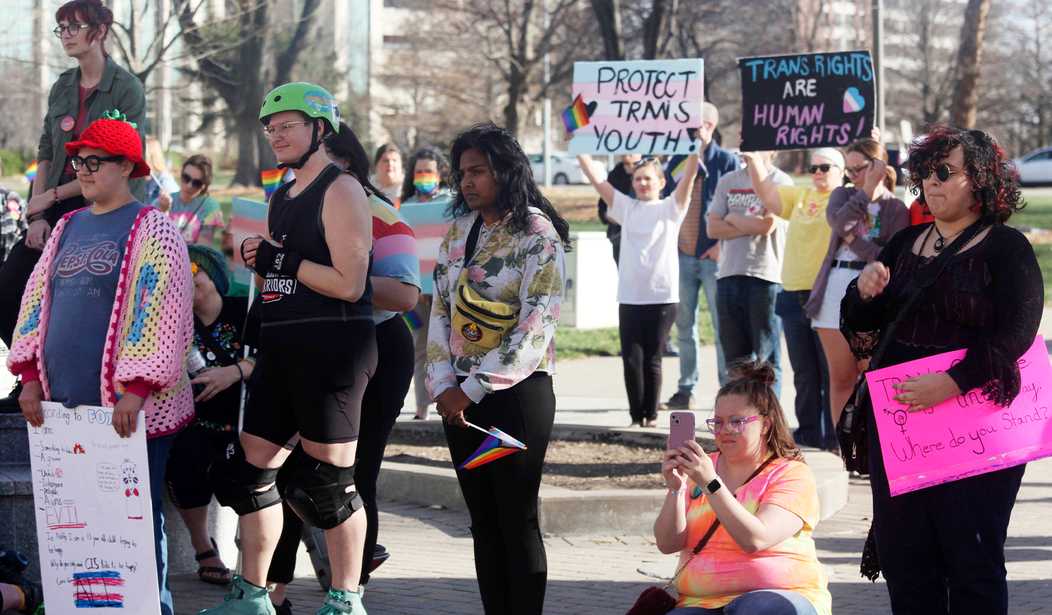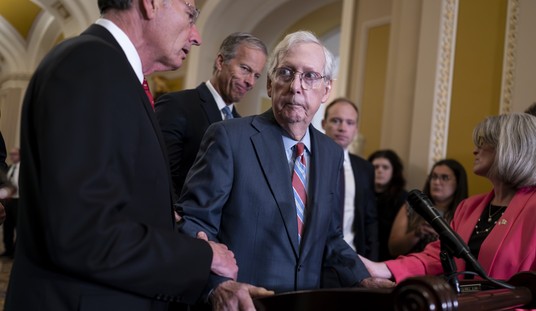As much as progressives try to convince the rest of us that the rise in younger folks identifying as LGBTQ+ is perfectly natural and organic, data continues to emerge showing that there is more to this story. In this latest example, it becomes even more clear that societal forces are playing a much bigger role in this trend than folks on the hard left would have us believe.
New survey data from Brown University’s student newspaper suggests that the increase in identification as LGBTQ+ among students is driven by social pressures, with the percentage of non-heterosexual students almost tripling from 2010 to 2023.
The survey also revealed significant increases in other sexual orientations within the LGBTQ+ community. Critics argue that the idea of LGBT identification as a social contagion is controversial, but social pressure is acknowledged in other areas of behavior and lifestyle:
New survey data from Brown University’s student newspaper provides further evidence that the increase in LGBT identification is driven by social pressures.
The latest data show that between 2010 and 2023, identification as LGBTQ+ has almost tripled among the student body at Brown (from 14% in 2010 saying they were not heterosexual to 38% now). “The Herald’s Spring 2023 poll found that 38% of students do not identify as straight — over five times the national rate ,” The Brown Daily Herald reported. “Over the past decade, LGBTQ+ identification has increased across the nation, with especially sharp growth at Brown.”
Other sexual orientations have seen massive increases. “Since Fall 2010, Brown’s LGBTQ+ population has expanded considerably. The gay or lesbian population has increased by 26% and the percentage of students identifying as bisexual has increased by 232%,” the student newspaper reported. “Students identifying as other sexual orientations within the LGBTQ+ community have increased by 793%.”
Other studies have also shown that the rise in folks identifying as transgender, in particular, is largely influenced by society and environment. In her book “Irreversible Damage,” author Abigail Shrier referred to a 2018 United Kingdom study showing a 4,400 percent increase in the number of teenage girls seeking out gender treatments.
Amid widespread speculation about the social contagion theory, folks on the left are making the dubious claim that these increases are not influenced by society:
“Social contagion” is not driving an increasing number of adolescents to come out as transgender, according to a new study published Wednesday in the journal Pediatrics.
The study also found that the proportion of adolescents who were assigned female at birth and have come out as transgender also has not increased, which contradicts claims that adolescents whose birth sex is female are more susceptible to this so-called external influence.
“The hypothesis that transgender and gender diverse youth assigned female at birth identify as transgender due to social contagion does not hold up to scrutiny and should not be used to argue against the provision of gender-affirming medical care for adolescents,” study senior author Dr. Alex S. Keuroghlian, director of the National LGBTQIA+ Health Education Center at the Fenway Institute and the Massachusetts General Hospital Psychiatry Gender Identity Program, said in a statement.
Nevertheless, the past decade has witnessed a significant increase in the number of individuals identifying as LGBTQ+, particularly among transgender individuals. The rapidity of this surge suggests that social contagion plays a significant role. Dismissing the impact of social contagion in the LGBTQ+ identification process is an oversight, as evidence indicates that children and young adults experiencing gender dysphoria are being influenced by societal pressures to embrace transgenderism, often through the promotion of “gender-affirming care” in K-12 schools.
The concept of social contagion suggests that individuals may adopt certain behaviors, beliefs, or identities due to peer influence or societal pressure. In the case of LGBTQ+ identifications, there is mounting evidence that social contagion plays a significant role. They cite influences coming from school, friends, and social media as the top contributors to the trend.
Many children and young adults experiencing gender dysphoria are being encouraged to embrace transgenderism through the “gender-affirming care” model. This model often includes medical interventions, such as hormone treatments and surgeries, without sufficient exploration of underlying psychological factors. Progressives in the medical field have been pressuring professionals to push these treatments on minor children while rejecting the “watchful waiting” approach that was used previously. This involved using talk therapy to treat children suffering from gender dysphoria while waiting to see if they would grow out of it, as 79 percent of children typically do.
In K-12 schools, there is a concerted effort to promote transgenderism, sometimes even without parental consent. These influences can create an environment where vulnerable individuals may feel pressured to adopt a transgender identity, influenced by the desire for acceptance and validation.
Denying the influence of social contagion in the rise of LGBTQ+ identifications is both disingenuous and detrimental to an open and honest discussion on the matter. It is essential to differentiate between those who authentically identify as LGBTQ+ and those who may be influenced by societal pressures and peer influence. This is especially true when it comes to transgenderism in children.
Acknowledging the influence of social contagion does not mean disregarding the importance of acceptance and support for LGBTQ+ individuals. Instead, it calls for a nuanced understanding of the complexities surrounding gender identity and a more comprehensive approach to addressing gender dysphoria. Providing appropriate mental health resources, unbiased counseling, and a thorough exploration of underlying psychological factors can help ensure that individuals receive the care and support they need instead of subjecting these children to harmful “treatments” that cause damage that cannot be healed.












